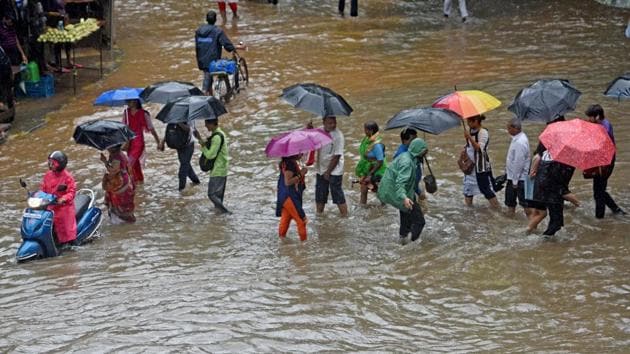Stem concrete rot to end flooding in Mumbai
Not once has any authority studied the likely cumulative environmental impact of this large-scale developer-led concretisation of Mumbai and eradication of its open spaces
For the umpteenth time, Mumbai has been hit by extreme rainfall, and for the umpteenth time, it has failed to cope with this unprecedented but expected rainfall. Just one bout of heavy rain, and Mumbai was faced with the normal, albeit unfortunate, issues of waterlogging, crumbling bridges, stalled trains which naively, we seem to be accepting as the norm during monsoon.

As expected, the rains have set the usual blame-game ball rolling between the BMC and other agencies. The story repeats itself — BMC workers are on the roads 24/7 unclogging drains and applying band-aid to immediate issues. But the city fails to look at the larger picture and resolve the core issues which are repeatedly exacerbating flooding in Mumbai. One fails to understand the depth of the policies and Development Control Regulations promoting concretisation of every square inch of available space, eradicating the scope for any ground water percolation.
It is common that a high Floor Area Ratio cannot be provided in low-lying areas, where geographically, it is impossible to raise the ground levels.
Yet the local and state authorities are continuously tweaking their respective development plans, promoting a higher density while criminally neglecting carrying capacities such as utilities, amenities and open spaces. In Mumbai, the BMC is then expected to deal with the repercussions, but it cannot as it has been crippled and left with no authority to monitor these developments.
In the current DP, the state has turned the development plan on its head, allowing extremely high FSI across the city, but taking the onus off developers to provide open spaces. It has completely subverted the Supreme Court judgment of 2013 which lays stress on carrying capacities of the areas. Under the false premise of ease of doing business, the state has endowed the municipal commissioner, a single officer, with numerous discretionary powers. Instead of empowering local authorities, the state is constantly interfering in the development of city. In its very thoughtless approach to planning, the state has craftily referred to protected natural and eco-sensitive areas as being amenable to development.
Not once has any authority studied the likely cumulative environmental impact of this large-scale developer-led concretisation of Mumbai and eradication of its open spaces. Today, every fatal disease known to mankind is thriving in Mumbai. Our lawmakers, however, are exempt from taking any responsibility; they are unwilling to accept that this unbridled urban development has a direct link to people’s health. They are happy in playing this simplistic blame-game and perpetuating the planning mistakes of the past.
The fractured governance of the city is proving to be the biggest challenge. To make the city rain-ready, it is a must that natural areas are not freed up for development.
Without a doubt, the need of the hour is to empower our local authority.
Creation of separate jurisdictions within a municipality can no longer be tolerated as an excuse for poor planning. But in the MMR, our government agencies are shying away from their core responsibilities of providing essential services.






